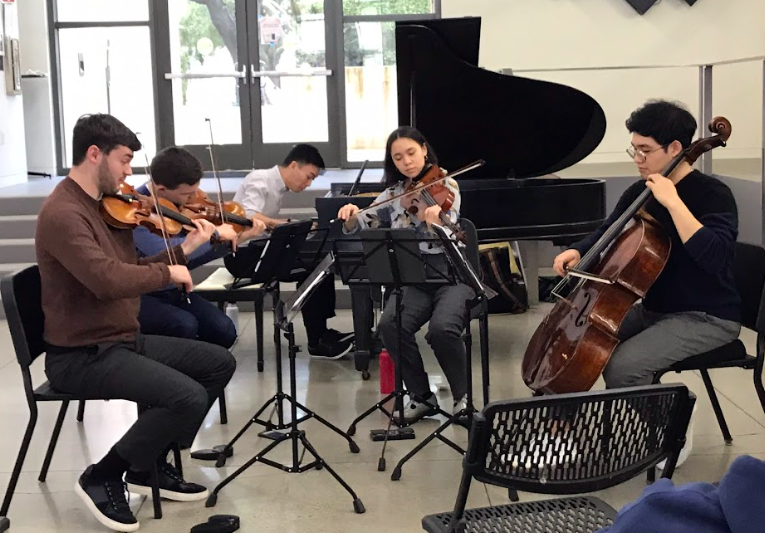From late August to early June, the Menlo campus is alive with the vibrant presence of students and teachers alike. Contrary to belief, this vibrance doesn’t disappear come summer vacation. While some students enjoy summer music festivals like Outside Lands or Stagecoach, Menlo’s own internationally acclaimed chamber music festival and institute, Music@Menlo, lights up campus every summer.
Along with respected musical professionals performing throughout the festival, Music@Menlo brings together eleven selected students from around the world to begin their careers in the music industry. In addition, members of the Young Performers Program, a collection of students ages 8 to 18, are invited to live in the Menlo College dormitories while learning from professionals and performing for public audiences.
Started in 2002, Music@Menlo is in its 22nd year; its founders, cellist David Finkel and pianist Wu Han, had the vision for the program in 2000. According to Music@Menlo executive director Edward Sweeney, “[Finkel and Han] were hoping to start a festival just focused on chamber music, one where the primary mission was educational.”
As stated by Sweeney, one aim of the program is to provide young musicians with the opportunity to learn what it is like to be a chamber musician. After searching the country for the perfect festival venue, Finkel and Han were drawn to Menlo, not only due to the charming environment, but also because they resonated with Menlo’s shared passion for musical education.
Sweeney noted that it was a visit Finkel and Han took to see a friend living on the Menlo campus (in the home that is now Head of School Than Healy’s) that made them fall in love with Stent Hall, where Music@Menlo currently holds performances. “They went and talked to Menlo’s Head of School [Norm Colb] the next day, and said, ‘How would you like to have a chamber music festival on campus?’” Sweeney said.
For the most part, Music@Menlo operates solely during the summer. However, Music@Menlo participants also visit some Menlo classes throughout the Winter Residency, an extension of the program that holds classes on topics ranging from creative arts electives to science classes. “We wanted to make sure that whenever we had an opportunity, […] we would impact Menlo students,” Sweeney said.
For the past decade, Music@Menlo has contributed to philosophy teacher Jack Bowen’s “Philosophy of Art” unit, which explores artistic value through defining the standards of art. “This [class content] all sets the stage for Music@Menlo,” he said.
Bowen voiced his admiration for the musicians’ ability to connect the dots between music and art history. “They’re not only world class musicians, but they have a deep understanding of the history of art,” he added.
This deep dive into art’s essence sparks intriguing discussions in Bowen’s class. For example: can a bird’s song be classified as music? Such questions not only provoke thought but also offer students a tangible connection to musical eras such as modernism and the classical period. By hearing and feeling the music, students gain a profound insight into its historical and cultural significance.
Music@Menlo additionally visited art teacher Nina Ollikainen’s classes. “In February, art students […] were treated to a wonderful interactive program of music presented by the very talented Music@Menlo quintet,” Ollikainen said.
While listening, sophomore Diya Karthik was assigned to draw how she saw and felt the progression of the music. “It was fascinating to observe the correlations between music and art and how variations in music affect the theme and color scheme of paintings,” Karthik said. Through these visits from Music@Menlo, Menlo students have gained an altered perspective on the interconnection of music and other subjects in their class schedule.
This lasting impact mirrors the effect Music@Menlo has on its musicians — over 40 program alumni have gone on to organize their own music festivals or musical organizations. “We jokingly refer to it as the ‘Menlo effect.’ Students come here and sort of say, ‘Look, this is all it takes, is a musician who really wants to create something like this and a place to do it,’” Sweeney said. This “Menlo effect” shows the transformative power of Music@Menlo, not just within Menlo’s campus, but in the broader world of music.









